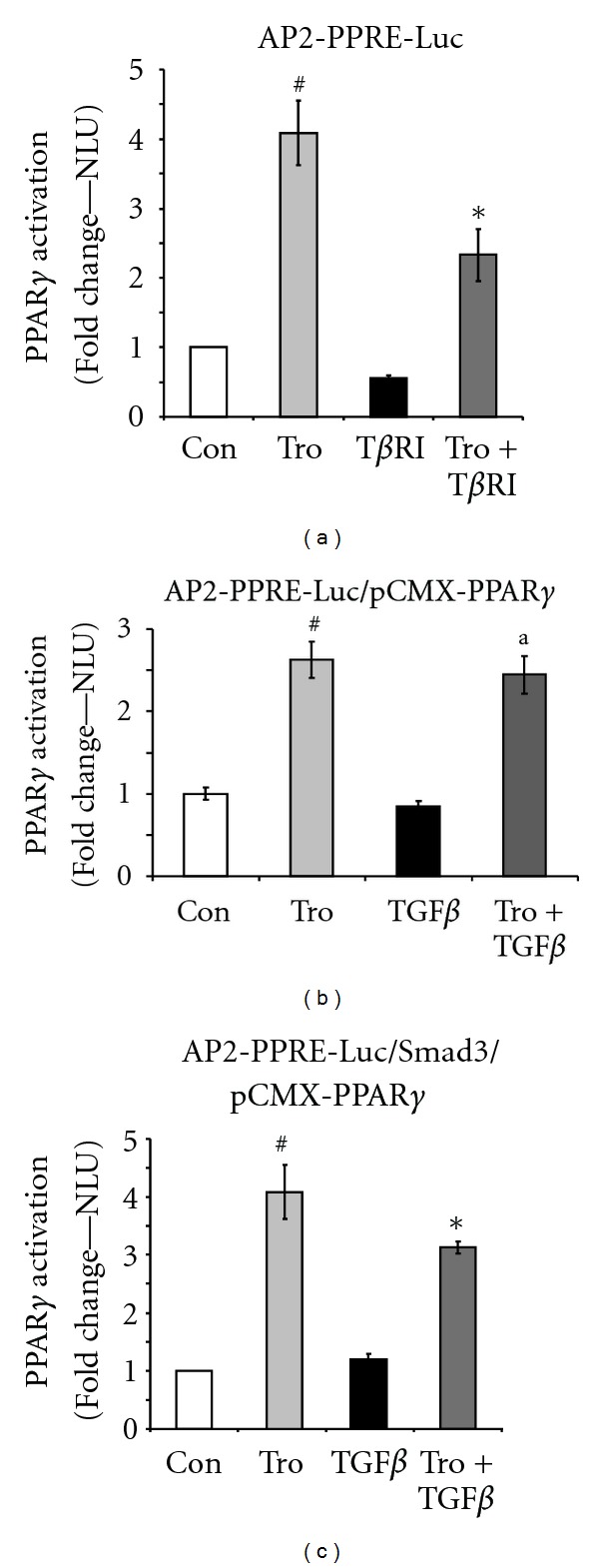Figure 3.

TGFβ1 signaling inhibits the transcriptional activity of PPARγ. PPARγ transcriptional activity was determined with luciferase assays in NIH/3T3 fibroblasts bearing a PPARγ response element-luciferase reporter (AP2-PPRE-Luc). Luciferase activity was normalized to Renilla with data shown as fold change ± SE relative to control. # P < 0.001 compared to control. *P < 0.001 compared to troglitazone. a P: ns compared to troglitazone. (a) Effects of troglitazone and TGFβRI. PPRE-containing NIH/3T3 fibroblasts were treated with troglitazone (Tro 10 μM) and/or cotransfected with a constitutively active type I TGFβ receptor (TGFβRI). At 24 hours, cells were analyzed for luciferase activity. (b) Overexpression of PPARγ gene. The full-length PPARγ gene and a PPRE were cotransfected into NIH/3T3 fibroblasts, which were then pretreated with TGFβ1 (10 ng/mL) for 1 hour, followed by troglitazone (10 μM) for 24 hours. (c) Role of Smad3. Smad3 and PPARγ were coexpressed in NIH3T3 fibroblasts with a PPRE. Cells were exposed to TGFβ1 (10 ng/mL) for 1 hour and then stimulated with troglitazone (10 μM) for 24 hours.
